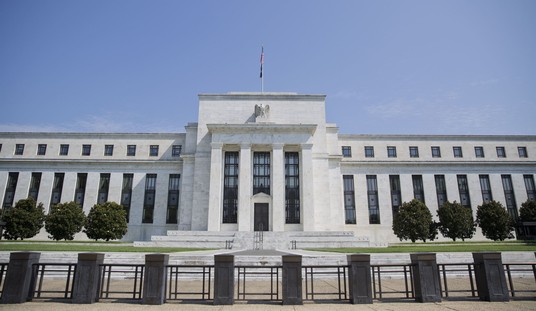Like other world religions (Judaism, Christianity, et al), Islam is not monolithic. Most of us know that there is a basic split between the Sunni and Shi’a (kinda sorta like the split between Catholicism, Eastern Orthodoxy, and Protestantism), but the more I studied, the more vast and deep (and confusing) the different subsets of Islam became. And I began to realize their various competing beliefs all had quite a bearing on the governments and terror groups of the Middle East today.
Here is a quick guide for “infidels” (non-Muslims) like me who would like to understand a little more about the beliefs of over 1 billion people:
1. Sunni.
The Sunni (taken from the Arabic word “sunna” meaning “tradition”) are the largest sect of Islam, comprising some 85%-90% of all Muslims. If you live in the United States and you think of Muslims, you are probably thinking of the Sunni. They are the majority in such nations as Egypt, Iraq, Turkey, Indonesia, Pakistan, and the like.
Besides adhering to all the major tenets of mainline Islam, the Sunni believe that Muhammed, the prophet of Islam, did not specifically choose a successor before he died. So, the Muslim community through a “Shura” (“council”) chose his father-in-law, Abu Bakr, as the first caliph since his life most closely followed the character (the traditions, or “sunna”) of Muhammed.
The caliphate (spiritual and political leaders of Sunni Islam) continued until the break up of the Ottoman Turkish Empire at the end of World War I. The current leadership of ISIS believes that they have brought back the caliphate for all true Muslims to follow.
2. Shi’a.
The Shi’ites are about 10%-15% of all Muslims, but definitely wield an influence that far outweighs their numbers. This is the group that runs Iran, and has significant minorities in Lebanon, Syria, Iraq, Bahrain, and Yemen. (Hezbollah in Syria and Lebanon is a Shi’ite Islamic terror organization.) In contrast to the Sunnis, the Shi’ites believe that Ali (Muhammed’s son-in-law) should have been the first caliph all along.
The “umma” (worldwide Muslim community) should be headed up by a direct descendant of Muhammed. Ali was the first “imam” or spiritual leader after Muhammed, and thereafter Shi’ites believe that succeeding imams (including the ones today) have special spiritual insights. Although there are numerous sub-sets of Shi’ite Muslims today, a group known as “Twelvers” is the dominant thinking among current Iranian leadership.
The Twelvers believe that after the eleventh imam died his son the twelfth imam (who was only a child at the time) disappeared during the funeral for his father. This child was never found. The story arose that this child is still alive today, and in hiding. He will someday reveal himself as the Messiah (known as the “Mahdi” to Muslims) and bring in a universal submission to Islam.
Many Shi’ites today believe this will happen only through a cataclysmic war between Muslims and infidels, with the Mahdi appearing to wipe out the infidels and bring in universal peace for all faithful Muslims. (So, now you see why so many in the Iranian leadership do not fear a nuclear confrontation. Such a holocaust would only accelerate the arrival of the Mahdi.)
Another offshoot of Shi’ite Islam is the sect known as the Ismaili. They subscribe to the same basic theology (though heavily influenced by Greek neo-platonic thought), but trace their Imam (the current leader Aga Khan IV) back to Ali and Fatima. They differ from the Twelvers in that they believe the true Imam is descended from Ismaili Ibn Jafar as opposed to Musa al Kadhim (younger brother of Ismaili). All this sounds rather nit-picky to most of us in the non-Muslim West, but the true successor to Muhammed (and thus the human spiritual leader of the worldwide community) is a really big deal to Muslims.
Ismaili Muslims live primarily in Afghanistan, Pakistan, India, and central Asia, but there are small communities scattered throughout the world.
Next Page: Sufi, Wahhabi, and Ahmadiyya.
3. Sufi.
The Sufis are basically the mystics of Islam. They seek to experience God on a much more personal level through meditation. The closest comparison to anything in Christianity would be monasticism. Sufi practitioners gather around a grand master (known as a “maula”) who supposedly traces his spiritual lineage through other grand masters all the way back to Muhammed. Most Sufis are Sunni, some are Shi’ite. Many conservative Muslims consider the Sufi to be outside the mainstream of Islam.
4. Wahhabi.
The Wahhabi movement was an attempt at “reform” within Sunni Islam. It is often described as the “fundamentalist” or “extreme puritannical” form of Islam that has bred such groups as Al Qaeda and ISIS. The founder was Muhammad ibn Abd al-Wahhab (1703-1792), an Arab who forged a lasting friendship with the House of Saud (the future rulers of what is now known as the Kingdom of Saudi Arabia). The teachings of Wahhabism became the official doctrine of Islam as practiced in the modern day Saudi Arabia.
It is through Wahhabism that the Saudis forbid women to drive, to mix socially with men, to leave the house unaccompanied by a male relative (even though other brands of Islam practice much the same thing). Wahhabism is often confused with the almost identical Salafist movement, although the two ideas have virtually merged into one idea.
The Wahhabi movement has backfired on the Saudis, since the terror groups Al Qaeda and ISIS have adopted Wahhabism as their ideology, and have concluded that the House of Saud is not “Islamic enough” and thus must be destroyed. So, today, the Wahhabist government of Saudi Arabia is fighting the even more Wahhabist ISIS next door! Other terrorists following this extreme ideology are Boko Haram and Al Shabab.
5. Ahmadiyya.
The Ahmadis are another reform movement. This one began in the Punjab area of India when the British ruled that corner of the earth. Mirza Ghulam Ahmad (1835-1908) was a Muslim who claimed to be the actual Mahdi (their “Messiah”) whose teachings would bring in universal peace. The followers of Ahmad believe they are true Muslims, true followers of Muhammed, but believe in peacefully evangelizing the world with their message of Islam. They do not believe in the violent holy war of the current Islamic terror groups.
The approximate 20 million Ahmadiyya Muslims in the world today believe in fighting only if they are being persecuted, but not to gain converts. Although they confess all the main tenets of Islam, and align themselves up mostly with the Sunnis, many mainline Muslims consider them to be heretics. One of their unusual beliefs is the idea that Jesus did die on the cross, but was revived later, and died in Kashmir!
Next Page: Alawi and Alevi — which are very different!
6. Alawi.
The Alawites are a subset of Shi’ite Islam who follow the “Twelver” school of thought. Their sect was founded in the ninth century by Ibn Nusayr. It is a significant minority in Turkey and Syria (11% of Syria is Alawite). They have attempted to keep their beliefs secret for centuries, but more is coming to light recently. It seems that they have an unusual syncretistic blend of elements of Christianity and ancient Greek neo-Platonism.
While they subscribe to the idea that there is only one God, they also believe in somewhat of a Christian idea of the Trinity. God has three aspects or emanations that have appeared several times through the centuries. The latest emanations of God have been in the lives of Muhammed, Ali, and Salman the Persian (a companion to Muhammed and the first Persian convert to Islam). Traditionally, Sunni Muslims have persecuted the Alawites.
However, the current Syrian leader Bashar al-Assad, is an Alawite, as was his father Hafez al-Assad. The Alawites have generally supported the current Syrian government, and have suffered terribly at the hands of ISIS (which considers anyone who is not one of them to be worthy of death). Interestingly, the Alawites (unlike most Muslims) drink consecrated wine in religious ceremonies, use Christian names for themselves, and observe Christmas, Epiphany, and the feast days of John Chrysostom (a fifth century Byzantine Christian preacher) and Mary Magdalene! Go figure!
7. Alevi.
The Alevi are another branch of Shi’ite Islam. This sect emerged in Turkey in the tenth century. They believe Ali was the rightful heir of Muhammed, but have also blended other beliefs into Islam: bits of Buddhism, Manichaeism, Zoroastrianism, and Shamanism find themselves in this interesting sect. Unlike the Alawites, they are unitarian. However, they emphasize Muhammed and Ali as representatives of Allah’s light. In fact, they will often invoke the names of Allah, Muhammed, and Ali as a blessing or oath in much the same way that Roman Catholics will say “Jesus, Mary, Joseph.”
The Alevi believe that men and women can worship together at the same time, believe that women are free to wear whatever they want, and should get an education and work in whatever job they wish.
Next Page: The semi-Muslims who serve in Israel’s defense forces.
8. Druze.
I am including the Druze here because they are an eleventh century offshoot from Shi’ite Islam, even though they do not consider themselves to be Muslims. (And Muslims do not consider them to be Muslim either.) The Druze are unitarian, and have as their holy book the “Kitab al Hikma” (“Epistle of Wisdom”), although they regard the Quran as a holy book as well. They combine elements of Judaism, Christianity, Gnosticism, and even Hinduism. What makes them unique (for that area of the world) is their belief in reincarnation. After several cycles of reincarnation they believe they are eventually reunited with the cosmic mind.
The Druze allied themselves with the Sunni Muslims against the Crusaders and earned a reputation as fierce warriors. However, the Druze do not believe in a worldwide violent jihad against infidels as many Muslims do.
They traditionally live in Syria, Lebanon, and Israel, but also live in small communities all over the world. Because they are considered infidels, they have been targeted by ISIS for extermination. Today in Israel the Druze freely serve at every level of Israeli society. They are judges, lawyers, teachers, members of the Knesset, and prominent leaders in the Israeli Defense Forces! They take great pride in their close knit families, but also in assimilating into other cultures wherever they have gone.
I realize that this “guide” is not all encompassing. (I know I left out a discussion of Louis Farrakhan’s Islamic offshoot, the Shi’ite Seveners and Fivers, and even the Baha’i’s who are not Islamic but emerged from Shi’ite Islam in Persia in the 19th century.)
I am sure that in this brief article I cannot do justice to explaining all the many differing beliefs. However, I hope that people like me have a little better understanding of the different competing ideologies within Islam and how they impact us today.









Join the conversation as a VIP Member